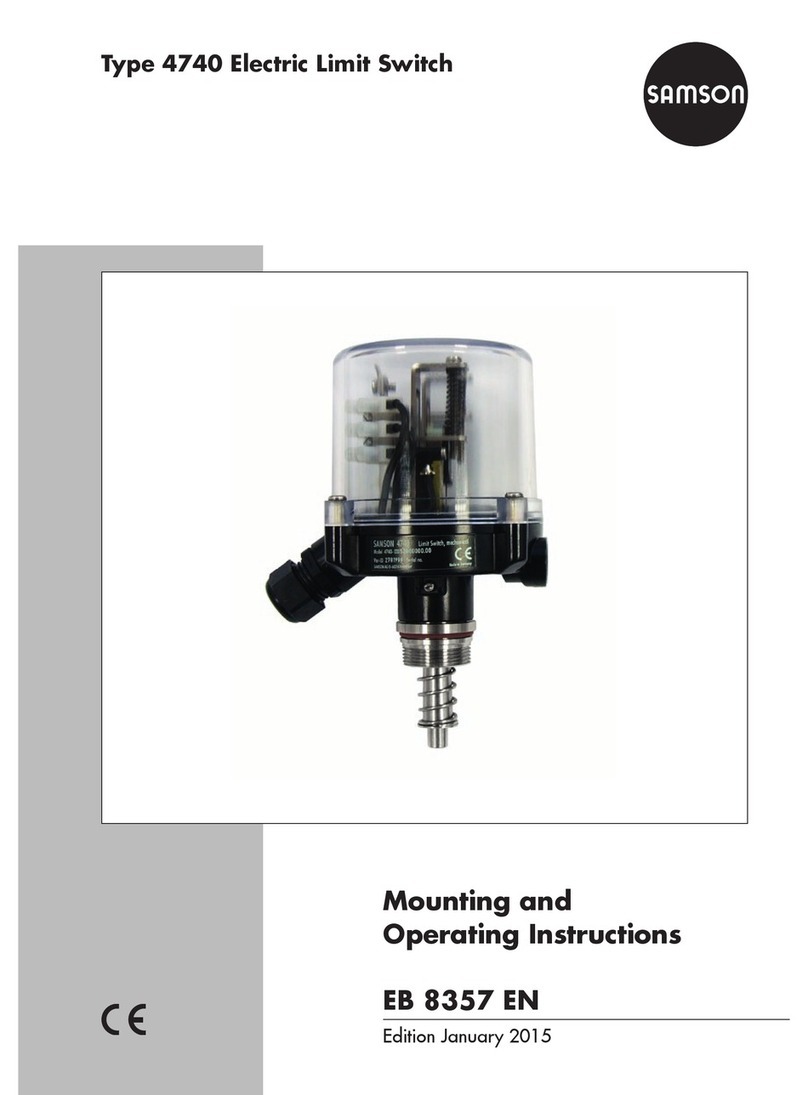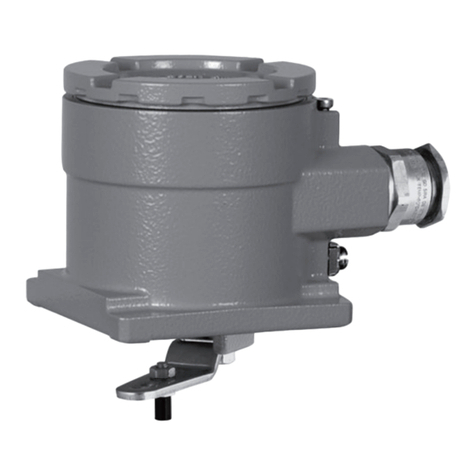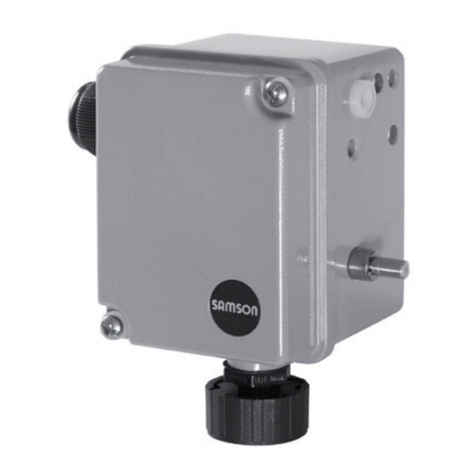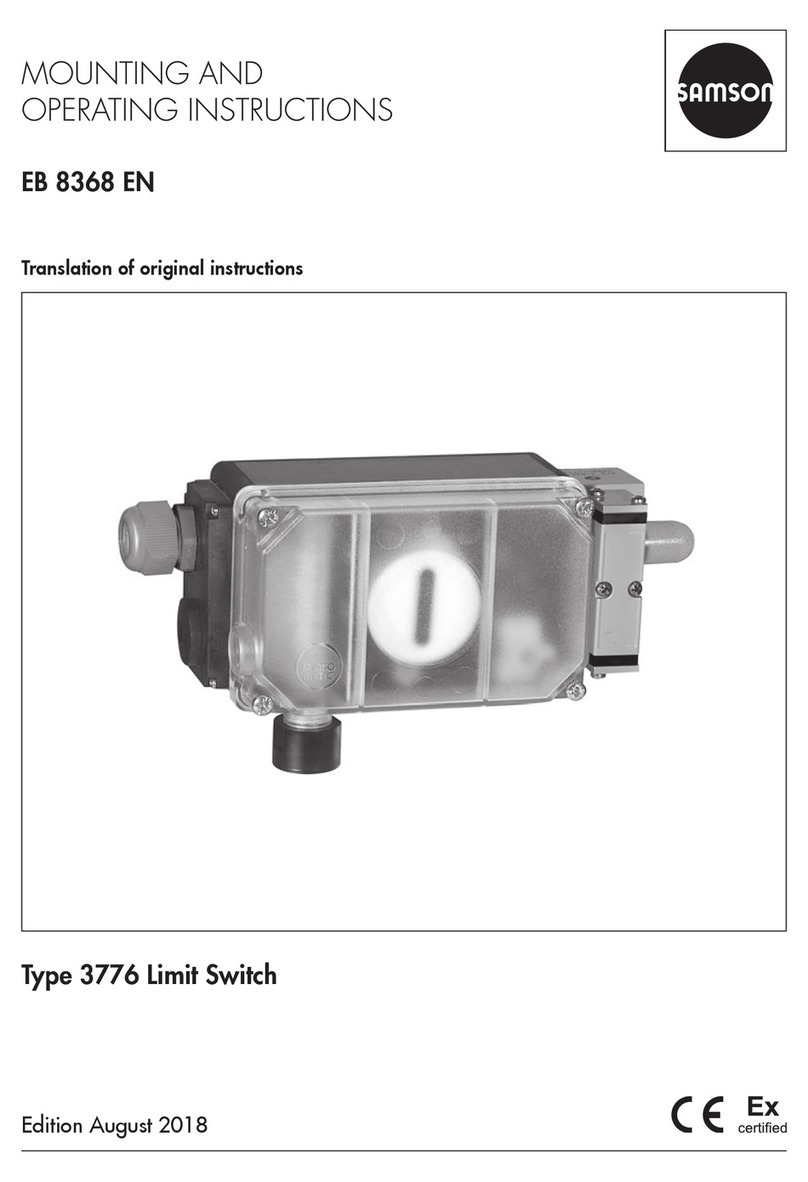
EB 8390 EN 9
Design and principle of operation
3 Design and principle of oper-
ation
The Type 3738-20 Electronic Limit Switch
can replace conventional solenoid valves
and limit switches used for the automation of
on/off valves without the need to change the
wiring or signal level. Major features of the
electronic limit switch include:
−Unicationofthefunctionsfeaturedinlim-
it switches and a solenoid valve in one
housing
−Power supplied in a two-wire system from
the connection of contact A, without the
need for an additional power supply
−Non-contact sensing of the rotation angle
by a magnetoresistive sensor system
−Integrated diagnostics with partial stroke
testing (PST)
−Suitable for use in safety-instrumented sys-
tems up to SIL 2 (single device) and SIL 3
(redundantconguration).Seesection3.3.
Fig.1: Valve assembly with electronic limit
switch (version with integrated solenoid
valve)
Fig.2 and Fig.3
The electronic limit switch is designed for at-
tachment to linear and rotary actuators. The
travel is measured without contact using a
magnet (on a screw) positioned centrically
on the actuator shaft. The screw with magnet
does not need to be adjusted. The AMR
(anisotropic magnetoresistive) sensor located
in the device together with the measuring
electronics (1) can detect the directional
changeoftheappliedmagneticeldand,as
a result, sense the movement of the actuator.
The actuator is operated by a solenoid valve
(7) which converts the binary signal issued
issued by the electric control equipment (6)
into a binary pressure signal.
The electronic limit switch has four NAMUR
contacts: the limit switch for fail-safe position
(contact A, 13) and the limit switch for oper-
ating position (contact B, 14) issue a limit
signal when the valve reaches the corre-
sponding end position. Contact C (15) indi-
cates when a third limit is reached or the PST
target range of the partial stroke test has
been reached. The switching response of the
contacts can be adjusted within the travel
range. The fault alarm contact St (16) indi-
cates the generation of any status and error
messages.
An electronic limit switch version for an ex-
ternalsolenoidvalve(Fig.2)isavailablefor
higher air capacities required by large actu-
ators. The principle of operation is the same.





































